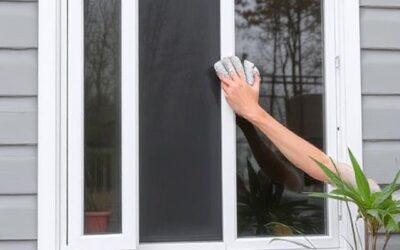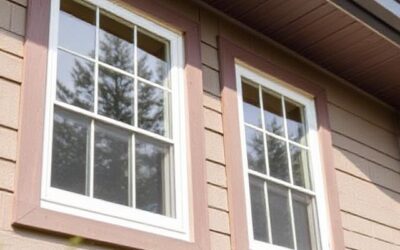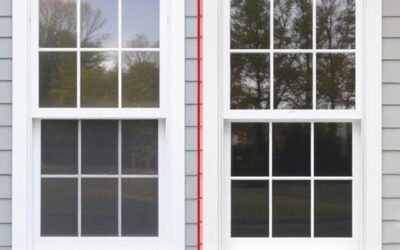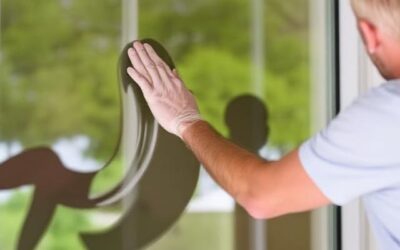How Dark Should I Tint My Home Windows? A Comprehensive Guide
When tinting your home windows, one of the common questions that arise is, “How dark should I tint my home windows?” Choosing the right tint level is crucial as it affects your windows’ appearance, privacy, and functionality. This comprehensive guide will explore different factors to consider when deciding on the darkness level for your home window tint. Whether you’re looking for window tinting for homes or searching for “window tinting near me,” this article will provide valuable insights to help you make an informed decision.
Understanding Window Tint Darkness Levels:
Visible Light Transmission (VLT):
Visible Light Transmission, or VLT, refers to the amount of visible light that can pass through the window tint. It measures as a percentage, with higher percentages indicating lighter tints and lower percentages indicating darker tints. The VLT value directly affects the darkness level of your window tint.
Home Owners (HOA) Regulations:
Before deciding on the darkness level of your window tint, it’s essential to research and understands home owners regulations. Some HOAs have regulations about which films you can use in the local area. Different regions have specific laws and restrictions regarding the darkness levels allowed for home window tinting. Check with your Home Owners Association to ensure your chosen window tint is approved.

Factors to Consider When Choosing the Darkness Level:
Privacy:
Privacy often becomes a significant consideration when tinting home windows. Darker tints provide a higher level of privacy by limiting visibility into your home. A darker tint may be preferable if you live in a densely populated area or have windows facing the street. However, striking a balance is essential, as extremely dark tints can significantly reduce natural light and make the interior feel closed off.
Sunlight and Glare:
Consider the amount of sunlight and glare you want to control. If your windows let in excessive sunlight, especially in hot climates, a darker tint with a lower VLT can help reduce heat and glare entering your home. This can result in energy savings and a more comfortable living environment. On the other hand, if you prefer ample natural light, you may find a lighter tint with a higher VLT more suitable.
Aesthetics:
The darkness level of your window tint also affects the overall aesthetics of your home. Some homeowners prefer a uniform look throughout their windows, opting for the same darkness level across all windows. Others may choose different darkness levels based on the room’s function, architectural style, or personal preference. Consider how the window tint will complement your home’s exterior and interior design.
Different Darkness Levels and Their Benefits:
Lighter Tints (70-50% VLT):
Lighter tints allow a higher percentage of visible light to enter your home, resulting in brighter interiors and better visibility. They offer a subtle tinting effect while still providing some heat and UV ray reduction. Lighter tints suit situations where privacy is not a significant concern, but you still want protection from the sun’s harmful rays.
Medium Tints (50-30% VLT):
Medium tints strike a balance between visible light transmission and privacy. They provide a moderate level of heat and glare reduction while allowing sufficient natural light to illuminate your space. Medium tints remain a popular choice for many homeowners seeking a combination of aesthetics, comfort, and privacy.
Darker Tints (30-10% VLT):
Darker tints offer a higher level of privacy by significantly limiting visibility into your home. They provide superior heat and glare reduction, making them ideal for areas with intense sunlight. However, it’s important to note that highly dark tints can noticeably reduce the amount of natural light entering your home.
Finding the Right Balance:
Choosing the darkness level for your home window tint involves balancing privacy, sunlight control, and aesthetics. Here are some tips to help you make an informed decision:
Consult a Professional:
Window tinting professionals possess extensive knowledge and experience in determining the appropriate darkness level for different situations. They can assess your specific needs, consider local regulations, and provide expert recommendations tailored to your home.
Consider Different Darkness Levels for Different Rooms:
It is beneficial to use varying darkness levels for different rooms in your home. For example, opt for darker tints in rooms where privacy is paramount while using lighter tints in common areas to maintain brightness and openness.
Test Samples:
Before committing to a specific darkness level, consider obtaining samples or swatches of different tint options. Place them on your windows and evaluate how they affect natural light, privacy, and the room’s overall ambiance. This allows you to visualize the impact before making a final decision.
Seek Feedback from Others:
Consult with family members, friends, or neighbors who install window tinting in their homes. Ask about their experiences with different darkness levels and how it has influenced their living environment. Their insights can provide valuable perspectives to aid in your decision-making process.
Conclusion:
Determining the darkness level for your home window tint involves factors such as privacy, sunlight control, and aesthetics. Understanding visible light transmission (VLT) and adhering to local regulations are essential aspects of the process. By carefully evaluating your specific needs and consulting with professionals, you can strike the right balance to achieve optimal comfort, privacy, and energy efficiency in your home. Whether you choose lighter, medium, or darker tints, window tinting for homes offers numerous benefits, including UV protection, glare reduction, and improved energy efficiency.
Follow Columbine Window for more insights!












